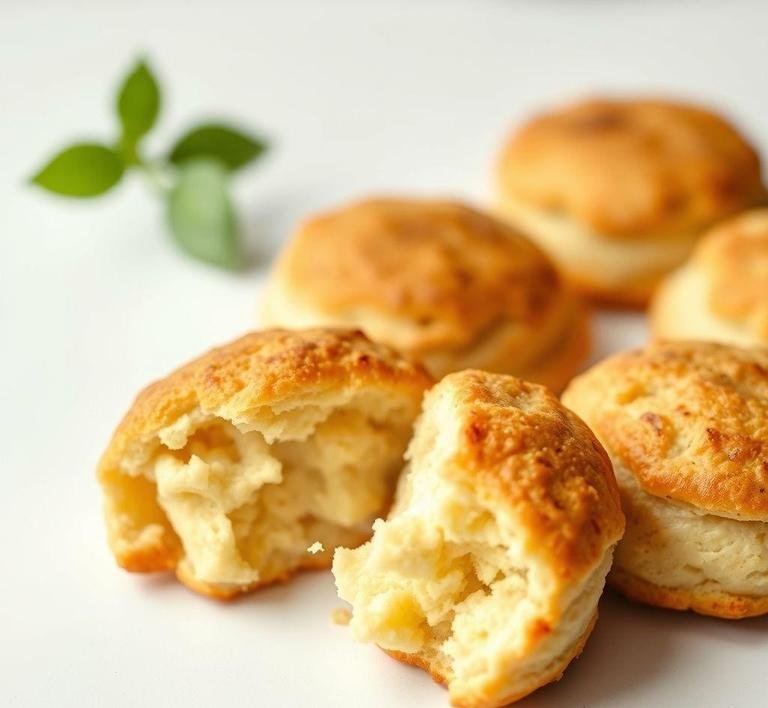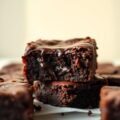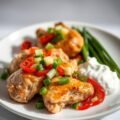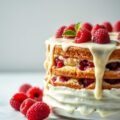Let’s start with this: if you’ve never had a drop scone, imagine a pancake’s plumper, cuddlier cousin. fluffier than the average flapjack, yet still small enough to stack high on a plate. Now picture Nigella Lawson, with her usual luscious way of describing food, stirring up a bowl of thick, golden batter and dropping spoonfuls onto a hot pan. That’s the scene that pulled me in.
Drop scones, also known as Scotch pancakes, are a British teatime classic. Unlike the big, buttery American pancakes you drown in syrup, drop scones are smaller, denser and feel more… homey. Nigella’s version is tender, slightly sweet and made for lazy weekend breakfasts or rainy afternoons with strawberry jam and thick cream. I first made them on a snowy Sunday, mostly because I wanted something warm and uncomplicated. What came out of the pan was so good, I made another batch before the first ones had even cooled.
Nigella Drop Scones Recipe
Ingredients Needed

You’ll smile at how simple this is. most of these things are likely in your pantry right now. Here’s what Nigella uses (and what I used, mess and all):
- 1 egg
- 225g (about 1¾ cups) plain flour
- 1 tablespoon caster sugar (I sometimes sneak in a little extra. my sweet tooth is bossy)
- 1 teaspoon bicarbonate of soda
- 1 teaspoon cream of tartar
- Pinch of salt
- 300ml (a bit over 1¼ cups) milk
- Butter for greasing the pan (I use unsalted)
The beauty is in the balance: the bicarb and cream of tartar work together like an old married couple, giving the batter that soft lift. No complicated alchemy – just dependable kitchen science.
Equipment Needed
Nothing fancy here. Honestly, if you’ve ever made pancakes before, you’re halfway there. But here’s what I had set out on the counter:
- A mixing bowl (glass feels more satisfying, no idea why)
- A whisk or fork (I used my grandmother’s old balloon whisk. something about the weight of it in my hand feels grounding)
- Measuring spoons and a digital scale
- A non-stick frying pan or griddle
- A spatula for flipping
- A ladle or large spoon. what you’ll use to “drop” the scones onto the hot pan (hence the name)
I always lay a clean tea towel over a wire rack to keep the scones warm in between batches. That’s a tip I picked up from a friend’s mum who insisted it made a difference. She was right.
Instructions To Make Nigella Lawson’s Drop Scones
Let me walk you through it like I’m standing beside you at the stove, wiping flour off my hands onto a tea towel.
-
Whisk the dry ingredients together
In a bowl, combine the flour, sugar, bicarb, cream of tartar and salt. You’ll get a soft, pale mountain of powder. This part always feels calming, like arranging your mise en place in a little world of order before the kitchen gets chaotic.
-
Add the egg and milk
Crack in the egg and start whisking gently, then pour in the milk slowly. The batter will be thick, more like cream than liquid. Don’t overwork it. I once did and the scones came out tough – edible but not Nigella-soft.
-
Heat your pan
Place your non-stick frying pan over medium heat. I swipe it with a dab of butter using a folded piece of kitchen paper. it gives you just enough to prevent sticking without frying them.
-
Drop the batter
Use a tablespoon or ladle to drop small rounds of batter onto the pan. They’ll spread a little but not too much. Each one should be about 3 inches wide. just the right size for one or two bites.
-
Wait for bubbles, then flip
After a minute or two, bubbles appear on the surface. That’s your cue. Flip them gently – they puff up beautifully and take on a golden color. It’s hard not to feel proud watching them rise like that.
-
Keep warm, then serve
As you finish each batch, transfer them to a warm plate and cover them lightly. I stack mine under that tea towel and sneak one or two for "quality control." Best enjoyed with a smear of butter, a spoonful of raspberry jam or – if I’m feeling nostalgic – golden syrup.
What I Learnt
The first time I made these, I overthought it – hesitating over the batter texture, second-guessing the pan temperature. But the truth is, Nigella’s drop scones reward simplicity. They’re like comfort food for the cook, not just the eater.
I learned that texture matters but so does trust. Trusting your eye, your hand, the feel of the batter as it drops. I learned that imperfection is fine. mine weren’t perfect circles and a few were more ’sunset tan’ than “golden brown”. But they were warm, pillowy and devoured with glee.
I also realized how deeply nostalgic food like this is. They reminded me of my mum making pancakes on a school morning when we were running late. except now, I’m the one holding the whisk, setting the mood.
FAQs
What Makes Nigella Lawson’s Drop Scones Different From Regular Pancakes?
Nigella’s drop scones are a bit like a cross between pancakes and scones-thicker than pancakes but lighter and fluffier than scones. The secret is in her use of buttermilk or milk, which gives them that perfect texture. Plus, they’re smaller, so you get that golden crispy edge with a soft, fluffy center.
Can I Add Fruit Or Other Flavors To Nigella’s Drop Scones?
Absolutely! You can add whatever you fancy-blueberries, raspberries, even chopped bananas. I’ve tried adding a little cinnamon and vanilla once, and it added such a nice warmth to them. Just fold in your add-ins gently so you don’t overwork the batter.
How Do I Make Sure Nigella’s Drop Scones Don’t Turn Out Too Greasy?
The trick is to use a good non-stick pan and make sure your heat is just right-not too high, so they cook evenly without burning. You don’t need a ton of butter in the pan either. A light brush or a spritz of oil works wonders, giving you just the right amount of crispness without excess grease.


